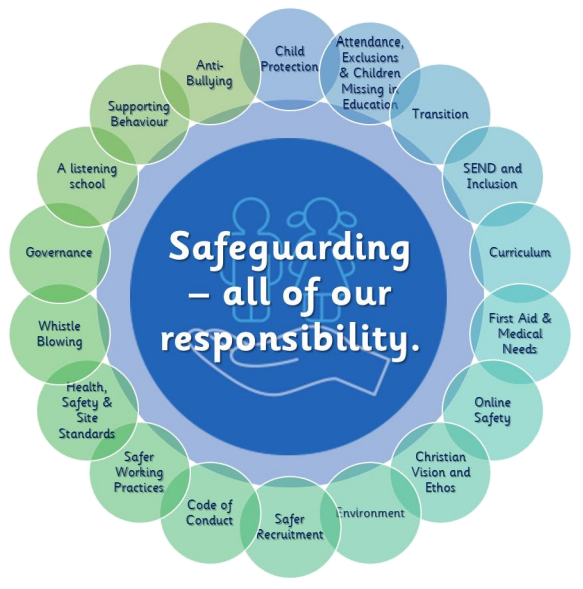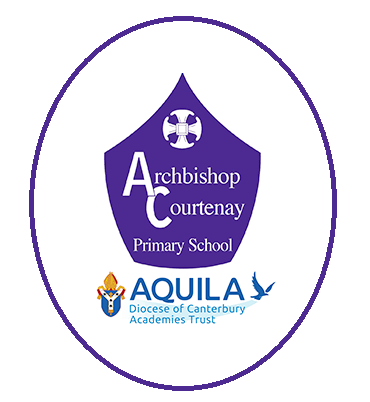Teaching Children about Safeguarding
Teaching Children Safeguarding
Archbishop Courtenay is committed to ensuring every child feels safe and secure both within and beyond our school community. As part of this commitment we feel it is important to actively educate children about ways to stay safe under the wider umbrella of safeguarding as demonstrated below.
“In everything, treat others the same way you want them to treat you.” Matthew 7:12
At Archbishop Courtenay, our Christian vision aspires for all members of our family to ‘learn to value themselves and others’. In doing so, we believe that excellence in the teaching of safeguarding is vital, in order to ensure that children can flourish and participate fully as healthy, happy and safe members of society.

Archbishop Courtenay is committed to ensuring every child feels safe and secure both within and beyond our school community. As part of this commitment we feel it is important to actively educate children about ways to stay safe under the wider umbrella of safeguarding as demonstrated above. The table overleaf shows how we aim to achieve this:
|
Safeguarding Area |
Actions |
|
Child Protection |
Direct teaching – e.g. NSPCC assembly – pants campaign PSHE curriculum – e.g. teaching children to recognise people it is “safe” for them to talk to and share feelings with, or teaching children the difference between secrets and surprises |
|
Attendance |
Weekly Attendance Ted – for the class with the highest attendance Fortnightly DSL messages about the importance of regular attendance and being on time |
|
Transition |
Transition days – visit to new classroom Regular links with local pre-schools, transition planned between Buttons Nursery and the main school Regular links with local Secondary Schools for Year 6 pupils – including children visiting for various events and secondary staff coming to visit our school Bespoke transition plans for vulnerable children Specific teaching in PSHE about change / moving on / new challenges. Transition focus groups for vulnerable groups |
|
SEND and Inclusion |
Values Education. Learning to Learn skills. My Happy Minds units of work Opal Play Leaders Positive Behaviours Policy Nurture and Welling Being Support |
|
Curriculum |
PSHE units – see below objectives linked to developing children’s ability to stay safe Science Curriculum - coverage includes teaching on nutrition, human body, staying safe, healthy lifestyle Computing Curriculum – Online Safety Culture Design and Technology – food and nutrition PE - active lifestyle, safety in water (Y4) Teaching of British Values My Happy Minds https://myhappymind.org/programmes/schools-programme/ |
|
First Aid & Medical Needs |
PSHE curriculum –e.g. using medicines safely, differences between medicines and drugs, knowing what to do if someone is injured Self-care education where required |
|
Online Safety |
Safer Internet day PSHE curriculum Computing Curriculum E-safety displays |
|
Christian Vision and Ethos |
An understanding of ‘The Two Builder’ Living through our vision Worship and Values-based Education |
|
The School Environment / Health and Safety |
Children are taught the importance of keeping school clean and tidy. Stay on green Playground rules. Guidelines for safety on trim-trails / climbing frame. PE – safe use of equipment. DT / Science - safe use of equipment Classroom / school equipment – children are taught to use this safely e.g. scissor safety. PSHE curriculum |
|
Behaviour management |
Be ready, Be respectful, Be safe Zones of regulation PSHE curriculum Christian Values based education My Happy Minds Anti-bullying policy Peer Mentoring Nurture and Wellbeing Support |
